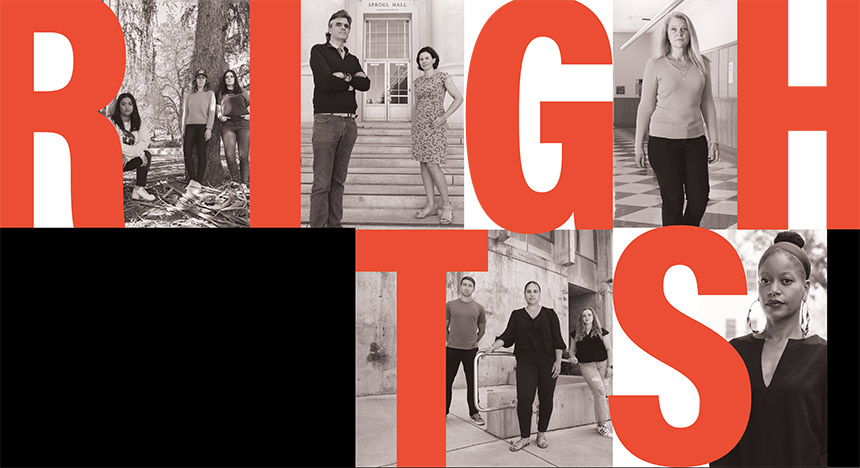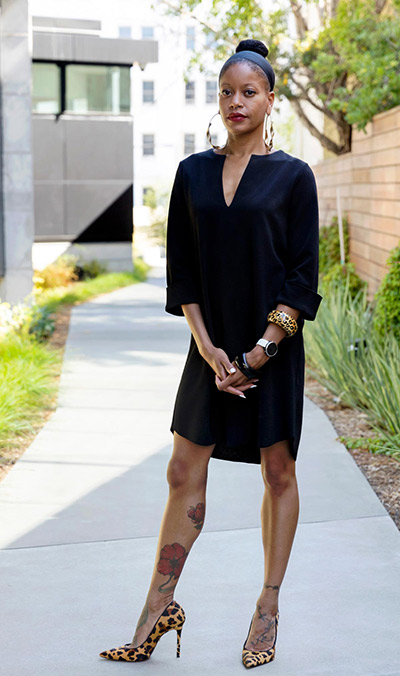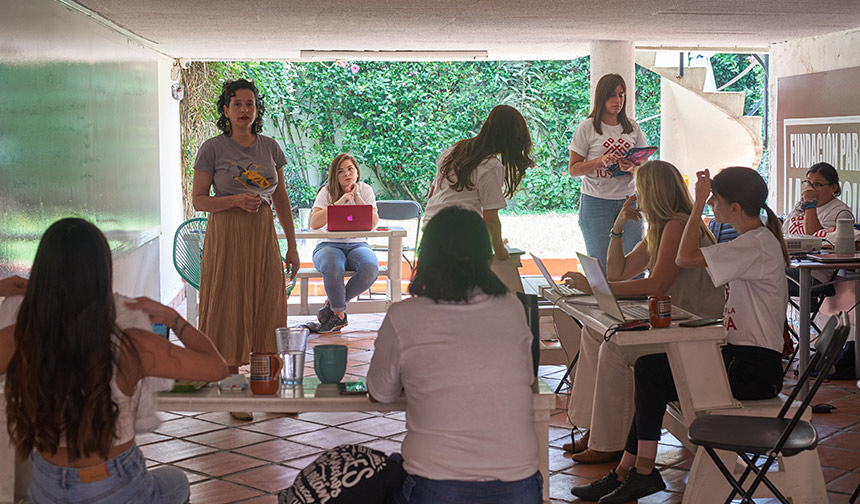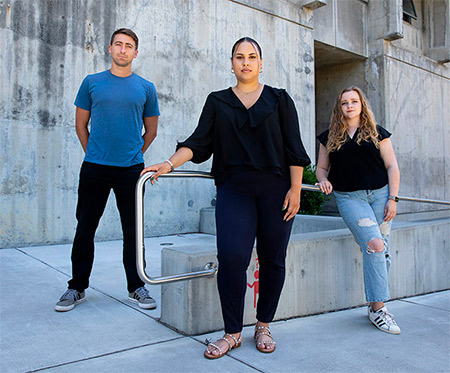
This was the cover story in the Fall 2022 issue of Transcript, Berkeley Law’s biannual magazine. You can see the full issue here.
By Gwyneth K. Shaw
Over just a few days this summer, the United States Supreme Court handed down a string of decisions that shook decades of constitutional jurisprudence to the core.
The right to abortion established in 1973’s Roe v. Wade? Gone. The modern definition of the establishment clause? Narrowed sharply by two decisions, one involving prayer in school and the other public funding for religious schools. The six-justice majority’s reading of the Second Amendment torpedoed a New York gun law and jeopardized similar rules in several other states.
The justices’ busy June capped a tumultuous run of history-making events, at home and abroad: Continuing fallout from the 2020 presidential election, including the investigation into the January 6, 2021, assault on the U.S. Capitol and the flurry of laws passed in Republican-dominated statehouses adding hurdles for voters and, in some cases, increasing the power of state officials to overturn results.
Efforts to whitewash material taught in public schools, from slavery to gender identity and sexuality, and a parallel rise in fearmongering rhetoric against the LGBTQ+ community. The rise of authoritarian leaders in countries across the globe and Russia’s ongoing invasion of Ukraine, provocations that have stymied global coalitions.
At such a moment, the rule of law — and the role of the law — has rarely felt so important. And Berkeley Law’s faculty and students are answering the call.
“Basic rights are endangered in the United States and across the world,” Dean Erwin Chemerinsky says. “Law professors, with their expertise and influence, have a special role to play in fighting for liberty and equality.
“Berkeley Law, because of its terrific faculty, its clinics, its centers, and more generally its public mission, is well-positioned to make a real difference.”
Chemerinsky, America’s most-cited constitutional law scholar, is working tirelessly to try and stem the tide, writing amicus briefs, scholarly articles, books, and op-eds. As president of the Association of American Law Schools, he’s prioritized how law schools can help solve the problems of the day. As dean, he’s nurturing a culture of action from scholars and students alike.
“I went to law school because I believed that law was the most powerful tool for social change. I continue to believe that, though we are at a very discouraging time,” Chemerinsky says. “I hope that through my opinion writing, my scholarship, and my work as a lawyer that I can help to be part of using law to protect people’s rights and make a positive difference.”
Pressing forward
Professor Khiara M. Bridges has been steeped in the debate over reproductive rights since before she started law school. She compares the Supreme Court’s decision in Dobbs v. Jackson Women’s Health Organization, which overturned Roe and 1992’s Planned Parenthood v. Casey, to “the longest, slowest train wreck.”

Everyone saw it coming, from the moment then-Senate Majority Leader Mitch McConnell refused to consider Merrick Garland’s nomination to the Supreme Court to when Justice Ruth Bader Ginsburg died weeks before the 2020 election, giving President Donald Trump his third nomination to the highest court.
“The last 20 years of my life have been prepping me for this moment,” says Bridges, the faculty director of Berkeley Law’s Center on Reproductive Rights and Justice. “Right now is this opportunity for me to share this expertise I’ve aggregated over the past two decades and try to make it as accessible to as many audiences as possible. I think it’s really important for people to understand what’s at stake with the reversal of Roe.”
Now that the impact is here, Bridges says, it still hurts. And she is clear-eyed about what is likely to come next. A number of other decisions that involve substantive due process — including Obergefell v. Hodges, which legalized same-sex marriage — could be next up for reconsideration by the court.
“I think it’s a failure of our imaginations to conceptualize the reversal of Roe as just discrete, as having no relationship to, for example, the attack on transgender and non-binary people that’s happening now,” Bridges says.
“Even though we read the Dobbs decision before it was actually released, when it was released, I was shocked. And I will be shocked when they reverse Grutter v. Bollinger next term and prohibit affirmative action and race-conscious admissions. I will be shocked as they continue to create a ‘super right’ out of the Second Amendment’s right to bear arms. I’ll be just as shocked as they dismantle the administrative state and make it impossible for the government to govern.”
Bridges sees a dual role for herself as a professor: Someone who imparts information and thoroughly teaches her students, and also as a sounding board and a resource for what she calls their “rebellious energy.”
“Part of the value that I give students in a classroom is to demonstrate that none of this is inevitable … to show the arc of justice and to remind them that this moment was created — and that they can create a different moment in the future,” she says. “My job is to empower critical thinkers, people who think creatively, people who don’t have a sense of inevitability, people who are not overly cynical. And maybe give them a sense of history, so they know the present isn’t inescapable.”
Protecting the ballot box
The Dobbs decision throws the abortion question back to the states, where this fall’s midterm elections will be the first test of a flurry of new election laws — many of which have been criticized as making it more difficult to vote.
“Polarization characterizes the retail experience of voting in America. In some states, it has never been easier to vote and register to vote; in others, it has gotten much, much harder than it has been in a long time,” says Professor Emily Rong Zhang, a former voting rights attorney whose research has delved into issues including voter ID laws and efforts to make redistricting less partisan. “The latter is due to aggressive restrictive voting laws passed by states and a Supreme Court that has shackled much of the federal courts’ and federal legislation’s ability to ensure some minimum standards of access to the ballot.”
It’s unclear exactly what impact these new laws will have on the outcomes of the November elections at the state, local, and federal level. Nevertheless, Zhang says there are plenty of things lawyers — and law students — can do, from volunteering with the Lawyer’s Committee for Civil Rights’ election protection hotline to monitoring elections and pitching in during post-election litigation.
“There is so much work to be done to rebuild our legal and democratic institutions,” Zhang says. “I’m excited to be teaching the many wonderful lawyers who will go on to do that important work.”
A group of Berkeley Law students found another way to tackle the issue this spring: The student-led Election Law @ Berkeley Law teamed up with the Democracy Project at Berkeley, run by students at UC Berkeley’s Goldman School of Public Policy, for Democracy Summit 2022, which they hope will be an annual event. Election Law @ Berkeley Law’s Co-President Sara Clark ’23 highlighted two goals for the event: Empowering students to advocate for democracy as citizens, candidates, or activists, and building a cross-campus collaboration with the Goldman group.
“We wanted to give students the tools and inspiration to continue fighting for a more just and equal American political system, even in difficult times,” she says. “Doing the event in tandem allowed us to draw on the resources, expertise, and knowledge of our friends in the policy space and have an event as interdisciplinary as democracy-saving work needs to be.”
Standing up for privacy
The post-Roe legal landscape also raises questions about the use of digital surveillance to follow women seeking abortions, including apps used to track women’s menstrual cycles. Clinical Professor Catherine Crump, director of the Samuelson Law, Technology & Public Policy Clinic, has been studying the inexorable march of digital surveillance for years.
“The biggest challenge to freedom from constant surveillance is how ubiquitous surveillance technologies have become, both online and offline,” Crump says.
Technology has spilled across the legal landscape as comprehensively as it has society as a whole. Other Berkeley Law scholars, including Professors Andrea Roth and Rebecca Wexler, look at technology’s impact on criminal cases, from algorithms that can be accessed by prosecutors but not defendants to how wide-ranging DNA databases raise profound privacy issues.
With cell phone evidence already routinely cropping up in criminal prosecutions from high profile ones like those against January 6 insurrectionists to everyday retail theft cases, it’s not much of a jump to imagine similar surveillance of women, it’s not much of a jump to imagine similar surveillance of women, particularly in states like Texas, which have incentivized citizens to snoop, Crump says.
“It’s just very hard to go anywhere or do anything these days without leaving a trail of digital breadcrumbs,” she says. “From using search engines to look for abortion services to using a cell phone to navigate to a clinic, this sort of evidence could well be used by a prosecutor enforcing a criminal prohibition on abortion.”
The Samuelson Clinic has pushed for broad change and California is making strides, Crump says — including with the California Privacy Protection Agency — which is led by Professor Jennifer M. Urban ’00, the clinic’s director of policy initiatives. A federal law to broaden safeguards for consumers is taking shape, too.
Clinics are a critical bridge between scholars and policymakers, Crump explains, pulling together the wide variety of areas in which digital surveillance is at issue.

“At the end of the day, weaving digital technologies into everyday life is just plain useful. We all like using our smartphones for driving directions and being able to look things up on Google,” she says. “For the most part, our policy goal should be to figure out how to take advantage of these technologies while minimizing downstream consequences.”
Defending the vulnerable
The threat of surveillance is even more pronounced abroad. Human rights advocate Ana Lorena Delgadillo, who’s been a key defender of those without the tools and resources to stand up to injustice in Mexico, turned to Berkeley Law’s International Human Rights Law Clinic for help when she and her organization, Fundación Para la Justicia (Foundation for Justice), discovered they were being spied upon as part of the same organized crime probe they were litigating.
“This is a global issue. Governments and private companies increasingly use surveillance technology against rights defenders,” clinic Co-Director Roxanna Altholz ’99 says of the type of spying done to Delgadillo. “The Mexican government would like to present the cartel as the problem, but the reality is that it is no longer possible to distinguish between the cartels and the government. State agents are collaborating with cartel members in pursuit of economic interests.
“And the state is targeting rights defenders and journalists who are exposing state kleptocracy.”
Altholz, clinic Co-Director Laurel E. Fletcher, and students working with the clinic helped Delgadillo file a criminal complaint against the Mexican attorney general’s office for illegal surveillance. They also developed a key international human rights argument: that the government violated not only the rights of the investigation’s targets, but also those of the victims, since resources were diverted from finding the truth about the massacres Delgadillo and her staff were trying to uncover.
“This organization, and others, are coming under increasing pressure from the government — and are really in the crosshairs of a government with some truly authoritarian tendencies,” Altholz says.
Diversifying the jury box
Professors and students in the Death Penalty Clinic have spent years fighting to reduce racial bias in jury selection and fulfill the promise of a fair and impartial jury. The clinic’s pathbreaking 2020 Whitewashing the Jury Box report, which found rampant racial discrimination by California prosecutors in jury selection, led directly to a new law that same year dramatically altering how criminal trial juries are selected in the state.

This year, the clinic released a study examining jury selection in Kansas, which found many of the same entrenched practices unearthed in California. Despite the 1986 Supreme Court ruling in Batson v. Kentucky that established a procedure for enforcing the Constitution’s prohibition against peremptory challenges based on race, the clinic’s report found that Kansas prosecutors removed at least half of the jurors of color in more than half of the cases — and struck all of them in at least one-third of the cases.
Their challenges were often based on racial stereotypes, such as the jurors’ demeanor or appearance, a negative experience with law enforcement, the nature of their employment, or where they live.
Clinical Professor and DPC Co-Director Elisabeth Semel, who has been litigating Batson-related cases for many years, sees an opportunity for sweeping change. So do the clinic’s students.
“It felt so impactful to be a part of something that would be tangible, lasting, and could be looked to in the future for policy changes,” says Maddy Pilgrim ’22, one of the students who did data analysis and legal research on the project. “I thought we were setting out to set Kansas apart, but really we were documenting that Kansas was just like every state across the U.S.”
Tenacity and urgency
That same optimism — accepting the long nature of the game but staying confident in its ultimate outcome — is part of what keeps Bridges in the fight. At one point in her career, she says, she questioned whether she was built for the experience of stepping into the public arena and speaking up. But the moment is too important to stay silent, she concluded.
“I feel like that’s my duty. I can’t just sit in the tower and watch while Rome burns, or tell my students, ‘You go out and do something,’” she says. “I feel as if my contribution to the struggle is to put myself out there.
“We’re all unclear about the path forward. But it’s imperative that we do whatever we can.”